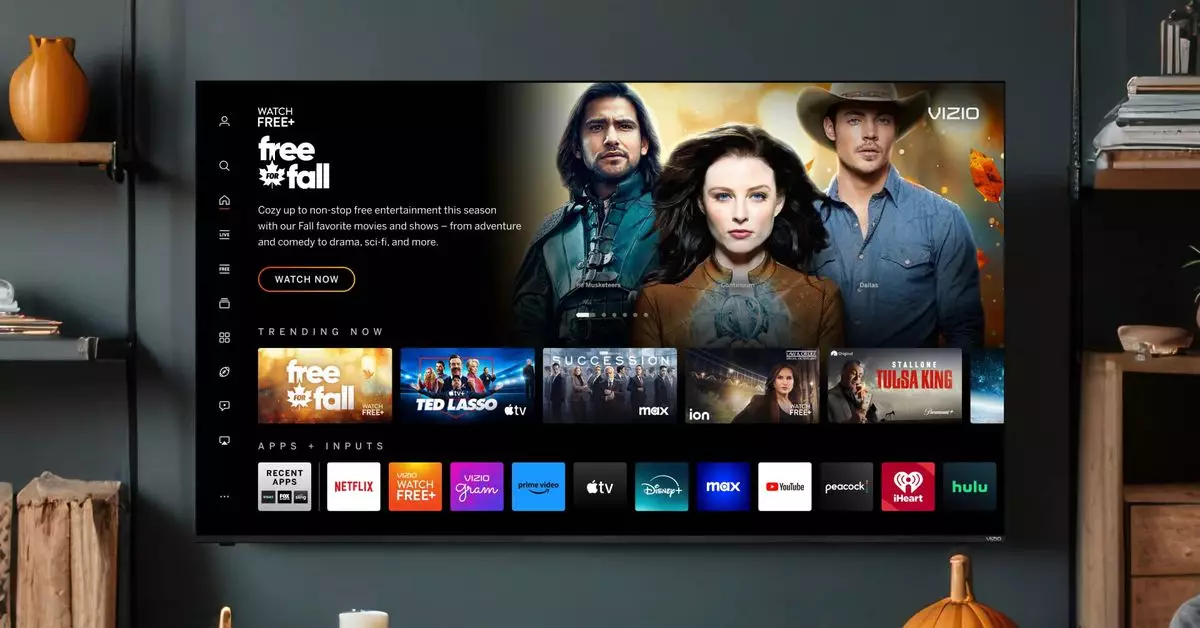Walmart’s recent acquisition of Vizio for $2.3 billion marks a significant shift in its business strategy. By officially closing the deal after months of anticipation, Walmart is not simply diversifying its portfolio; it is strategically enhancing its advertising capabilities within the rapidly evolving landscape of digital marketing. This merger presents Walmart with a lucrative opportunity to integrate Vizio’s advertising platform into its existing retail framework, potentially transforming how products are marketed to consumers across various channels.
At the heart of this acquisition lies Vizio’s robust advertising and data division, known as Platform Plus, which has been pivotal in driving the company’s profitability. Walmart’s intention to leverage this data aligns with its efforts to enhance personalized ad targeting on popular streaming platforms such as Disney Plus and Hulu. As Vizio TVs become an avenue for targeted advertisements, Walmart can streamline its advertising strategy by utilizing consumer insights and preferences gleaned from their interactions. This positions Walmart to not only increase its ad revenue but also to solidify its foothold in an increasingly competitive advertising market, where companies like Roku have recently showcased the potential for high returns through user targeting.
However, this acquisition is not without controversy. Vizio’s previous troubles with privacy, including a settlement with the Federal Trade Commission in 2017 regarding unauthorized viewer tracking, have raised red flags among privacy advocates. The merger intensifies scrutiny regarding how consumer data will be collected, processed, and utilized. Critics express valid concerns that Walmart’s enhanced data acquisition capabilities may further infringe on consumer privacy rights. As Vizio expands its advertising reach through Walmart’s extensive retail network, it becomes imperative that the companies remain transparent in their practices and prioritize user consent to mitigate the risk of violating privacy regulations.
With Walmart poised to integrate Vizio’s assets effectively, the competitive landscape for budget-friendly television brands is destined to change. The financial data paints a compelling picture: while Roku managed to generate significant revenues from advertising, Vizio’s earnings trail behind. The acquisition equips Vizio with the resources necessary to compete with low-cost brands that heavily rely on advertising revenues. Walmart’s ability to support Vizio as it scales its advertising model could result in a formidable competitor in the market.
Despite this acquisition, Walmart has pledged that both companies will maintain their operational independence for the time being. Vizio CEO William Wang will continue to lead the company, ensuring that its unique brand identity and operational strategies remain intact. As the integration progresses, it will be essential to monitor how Walmart’s oversight influences Vizio’s operations and innovation.
Walmart’s acquisition of Vizio opens the door to numerous opportunities for growth within the advertising sector while posing significant questions about consumer privacy and ethical data management. As the digital advertising landscape evolves, the interplay between these two giants will likely shape the market dynamics, ultimately highlighting the delicate balance between profitability and privacy. It will be essential for consumers and advocates alike to remain vigilant regarding the implications of this acquisition in the months and years to come.


Leave a Reply